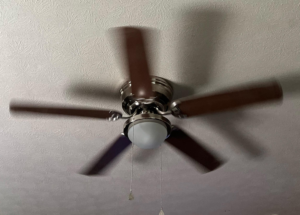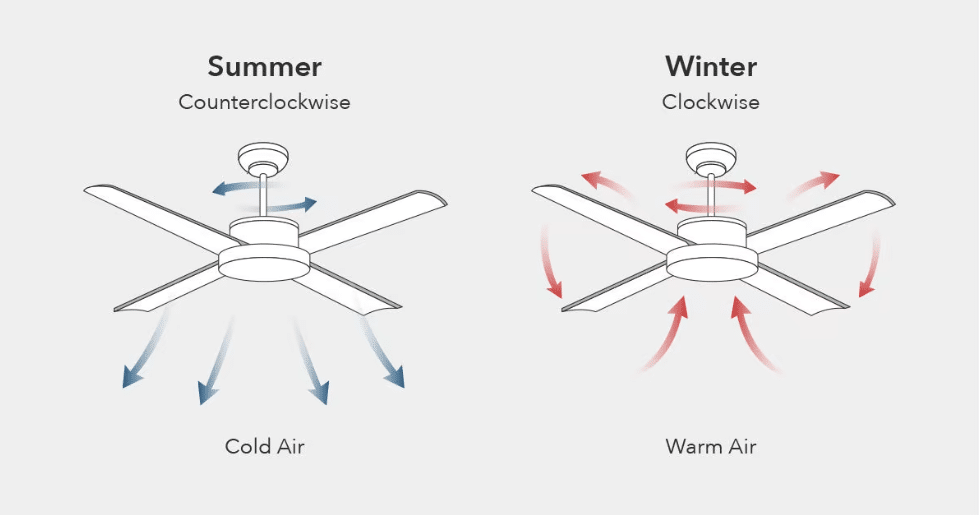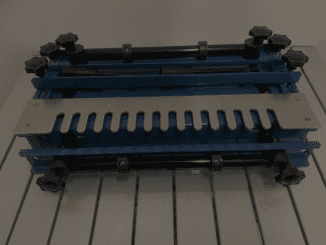Ceiling fans are versatile tools that can enhance comfort and energy efficiency throughout the year. Adjusting the direction of your ceiling fan depending on the season can help maintain a pleasant indoor environment and reduce energy costs. In this comprehensive guide, we’ll explore how to set your ceiling fan’s direction for optimal performance in both summer and winter, empowering you to create a comfortable, cost-effective living space year-round.

Summer: Counterclockwise for a Cool Breeze
In the warmer months, you want your ceiling fan to create a cooling effect. Set your fan to spin counterclockwise (when viewed from below). This direction pushes cool air downward, creating a breeze that makes you feel cooler. The moving air evaporates sweat from your skin, which can make a room feel several degrees cooler without altering the actual temperature.
To maximize energy savings, use your ceiling fan in conjunction with your air conditioning system. By improving air circulation, the fan helps distribute the cool air more evenly, allowing you to set your thermostat a few degrees higher and reduce energy consumption.
Winter: Clockwise for Warmth Distribution
During the colder months, switch your ceiling fan to spin clockwise at a low speed. This direction pulls cool air up and pushes warm air that has risen to the ceiling back down into the room. By circulating warm air more effectively, you can maintain a more consistent temperature throughout your living space and reduce heating costs.
The gentle clockwise airflow helps mix the warmer air with the cooler air near the floor, creating a more even temperature and minimizing drafts. This adjustment can make your heating system more efficient and save on energy bills.
Optimizing Year-Round Comfort
To ensure maximum comfort and energy efficiency, remember to adjust your ceiling fan’s direction according to the season. In summer, aim for a counterclockwise spin to enhance cooling, and in winter, switch to a clockwise direction to improve heat distribution. With these simple adjustments, you can enjoy a more comfortable environment and potentially lower your energy costs throughout the year.
Ceiling Fan Maintenance Tips
Alongside adjusting the fan direction, proper maintenance is essential for optimal performance. Regularly clean the blades and housing to maintain efficiency, and consider upgrading to an energy-efficient model for even greater savings. By combining seasonal adjustments and maintenance, you can unlock the full potential of your ceiling fan and create a comfortable, cost-effective home environment.

Ceiling Fan Placement Considerations
The placement of your ceiling fan can also impact its effectiveness. Ensure the fan is installed at the recommended height, typically 7-9 feet from the floor, and avoid placing it too close to walls or obstructions. This will allow for unhindered airflow and maximize the fan’s cooling or heating capabilities.
Integrating Ceiling Fans with Smart Home Technology
For a seamless, hands-free approach, consider integrating your ceiling fan with smart home technology. Many modern fans can be controlled via smartphone apps or voice commands, allowing you to easily adjust the direction and speed as needed, without ever leaving your seat.
Ceiling fans are a versatile and energy-efficient tool that can enhance comfort in your home year-round. By understanding how to properly adjust the fan direction for summer and winter, you can create a more comfortable living environment while potentially reducing your energy costs. Implement these seasonal adjustments, along with proper maintenance and smart home integration, to unlock the full potential of your ceiling fan and enjoy a more comfortable, cost-effective home.


